50g
Showing 1801–1850 of 1859 results
-
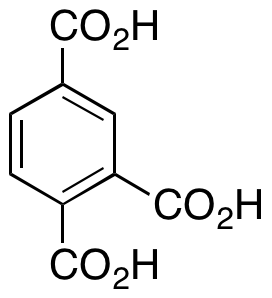
Trimellic Acid
$166.46 Add to cart View Product DetailsMolecular Formula : C9H6O6
-

Trimellitic Anhydride
$171.64 Add to cart View Product DetailsMolecular Formula : C9 H4 O5
-
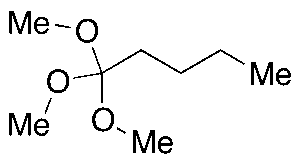
Trimethyl Orthovalerate
$253.58 Add to cart View Product DetailsMolecular Formula : C8H18O3
-
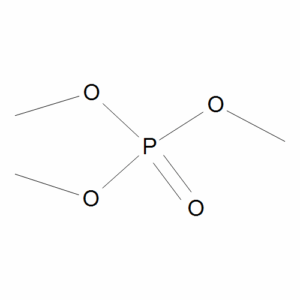
Trimethyl Phosphate
$62.96 Add to cart View Product DetailsMolecular Formula : C3 H9 O4 P
-

Trimethyl Phosphite
$103.50 Add to cart View Product DetailsMolecular Formula : C3H9O3P
-

Trimethylacetic Anhydride1538-75-6
$114.71 Add to cart View Product DetailsMolecular Formula : C10H18O3
-
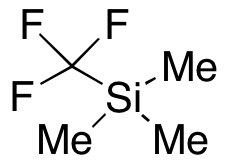
Trimethylsilyl(trifluoromethane)
$174.23 Add to cart View Product DetailsMolecular Formula : C4H9F3Si
-

Trimethylsulfonium Iodide
$209.59 Add to cart View Product DetailsMolecular Formula : C3 H9 S . I
-
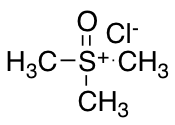
Trimethylsulfoxonium Chloride
$171.64 Add to cart View Product DetailsMolecular Formula : C3H9OSCl
-
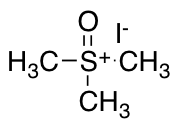
Trimethylsulfoxonium Iodide
$78.49 Add to cart View Product DetailsMolecular Formula : C3H9IOS
-

Trioctyl Trimellitate
$445.91 Add to cart View Product DetailsMolecular Formula : C33 H54 O6
-

Triphenyl phosphate
$78.49 Add to cart View Product DetailsMolecular Formula : C18 H15 O4 P
-

Triphenylmethane
$301.88 Add to cart View Product DetailsMolecular Formula : C19H16
-
Triphenylmethanol
$120.75 Add to cart View Product DetailsMolecular Formula : C19 H16 O
-

Triphenylphosphine Hydrobromide
$248.40 Add to cart View Product DetailsMolecular Formula : C18H16BrP
-

Triphenyltin Acetate
$144.04 Add to cart View Product DetailsMolecular Formula : C20 H18 O2 Sn
-
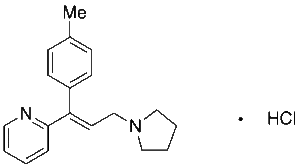
Triprolidine Hydrochloride
$658.95 Add to cart View Product DetailsMolecular Formula : C19 H22 N2 . Cl H
-

Tripropylene Glycol Diacrylate, Mixture of Isomers
$87.11 Add to cart View Product DetailsMolecular Formula : C15H24O6
-

Tris Hydrochloride
$69.00 Add to cart View Product DetailsMolecular Formula : C4H11NO3 . HCl
-

Tris(2-(2-methoxyethoxy)ethyl)amine
$209.59 Add to cart View Product DetailsMolecular Formula : C15H33NO6
-
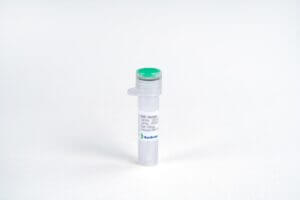
TrkA, Human
$133.69 Add to cart View Product DetailsTyrosine kinase receptor A (Trk-A) is a member of the neurotrophic tyrosine kinase receptor family which includes three members: Trk-A, Trk-B and Trk-C. Trk-A is involved in the development and maturation of the central and peripheral nervous systems through regulation of proliferation, differentiation and survival of sympathetic neurons.
-

Tromethamine
$49.16 Add to cart View Product DetailsMolecular Formula : C4 H11 N O3
-
Tropine
$179.40 Add to cart View Product DetailsMolecular Formula : C8 H15 N O
-

Tropolone
$223.39 Add to cart View Product DetailsMolecular Formula : C7 H6 O2
-

Troxerutin (85%)
$161.29 Add to cart View Product DetailsMolecular Formula : C33 H42 O19
-

Tryptamine
$113.85 Add to cart View Product DetailsMolecular Formula : C10 H12 N2
-

TSTU
$732.26 Add to cart View Product DetailsMolecular Formula : C9 H16 N3 O3 . B F4
-

TWEAK, Human
$155.25 Add to cart View Product DetailsTWEAK, short for TNF-related weak inducer of apoptosis, is also known as TNFSF12 and DR3LG. It is a type II transmembrane protein belonging to the TNF superfamily. It is expressed widely in many tissues, such as the heart, skeletal muscle, spleen and peripheral blood. Binding of TWEAK to its receptor TWEAKR induces NF-κB activation, chemokine secretion and apoptosis in certain cell types. TWEAK has also been reported to promote endothelial cell proliferation and migration, thus serving as a regulator of angiogenesis.
-

United Scientific® HEXAGONAL MASS, 50G
$1.00 Add to cart View Product DetailsHEXAGONAL MASS, 50G
-

United Scientific® INDIVIDUAL BRASS MASS, 50G
$3.12 Add to cart View Product DetailsINDIVIDUAL BRASS MASS, 50G
-

United Scientific® INDIVIDUAL HOOKED BRASS MASS, 50G
$2.14 Add to cart View Product DetailsINDIVIDUAL HOOKED BRASS MASS, 50G
-

United Scientific® WEIGHT HANGER, 50G, ALUMINUM
$4.98 Add to cart View Product DetailsWEIGHT HANGER, 50G, ALUMINUM
-

United Scientific® WEIGHT HANGER, 50g, BRASS
$4.38 Add to cart View Product DetailsWEIGHT HANGER, 50g, BRASS
-

Urea
$187.16 Add to cart View Product DetailsMolecular Formula : C H4 N2 O
-
UV-320
$222.53 Add to cart View Product DetailsMolecular Formula : C20 H25 N3 O
-
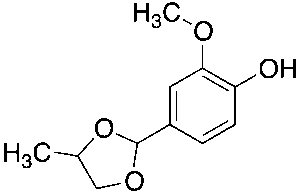
Vanillin Propylene Glycol Acetal
$77.63 Add to cart View Product DetailsMolecular Formula : C11H14O4
-

Vanillylacetone
$92.29 Add to cart View Product DetailsMolecular Formula : C11 H14 O3
-
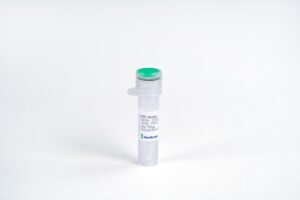
VEGF-A164, Mouse
$194.06 Add to cart View Product DetailsVascular Endothelial Growth Factor (VEGF) was initially purified from media conditioned by normal bovine pituitary folliculo-stellate cells and by a variety of transformed cell lines as a mitogen specific for vascular endothelial cells. It was subsequently found to be identical to an independently discovered vascular permeability factor (VPF), which was previously identified in media conditioned by tumor cell lines based on its ability to increase the permeability of capillary blood vessels. Three mouse cDNA clones, which arise through alternative splicing and which encode mature mouse monomeric VEGF having 120, 164, or 188, amino acids, respectively, have been identified. Two receptor tyrosine kinases (RTKs), Flt-1 and Flk-1 (the mouse homologue of human KDR), both members of the type III subclass of RTKs containing seven immunoglobulin-like repeats in their extracellular domains, have been shown to bind VEGF with high affinity. The roles of the homodimers of KDR, Flt, and the heterodimer of KDR/Flt in VEGF signal transduction remain to be elucidated. In vivo, VEGF has been found to be a potent angiogenesis inducer.
-

VEGF-C, Human
$155.25 Add to cart View Product DetailsVascular endothelial growth factor C (VEGF-C) is a member of the platelet-derived growth factor/vascular endothelial growth factor (PDGF/VEGF) family, is active in angiogenesis, lymphangiogenesis and endothelial cell growth and survival, and can also affect the permeability of blood vessels. VEGF-C is expressed in various tissues, however it is not produced in peripheral blood lymphocytes. It forms cell surface-associated non-covalent disulfide linked homodimers, and can bind and activate both VEGFR-2 (flk1) and VEGFR-3 (flt4) receptors. The structure and function of VEGF-C is similar to those of vascular endothelial growth factor D (VEGF-D).
-

VEGF-D, Human
$271.69 Add to cart View Product DetailsVascular Endothelial Growth Factor (VEGF)-D, also known as c-Fos-induced growth factor (FIGF), is a member of the PDGF/VEGF growth factor family. It is expressed highly in lung, heart and small intestine, and at lower levels in skeletal muscle, colon and pancreas. It binds to VEGFR-2 and VEGFR-3 receptors and activates downstream signals. VEGF-D is a growth factor active in angiogenesis, lymphangiogenesis and endothelial cell growth. It is involved in many developmental and physiological processes including the formation of venous and lymphatic vascular systems during embryogenesis and the maintenance of differentiated lymphatic endothelium in adults. In tumor pathology, it has been reported to play a role in restructuring of lymphatic channels and regional lymph node metastasis.
-

VEGF-R2 Fc Chimera, Mouse
$103.50 Add to cart View Product DetailsVEGF-R2 belongs to a family of proteins called receptor tyrosine kinases. The receptor has three main parts: one part extends out of the cell and binds to VEGF, another spans the cell’s membrane, while the third part is found inside the cell. The current model of VEGF-R2 activation is that VEGF binds to individual VEGF-R2 receptor proteins on the membrane, and brings two of them close enough to form a complex called a dimer. The receptor dimer is activated and initiates signaling within the cell. VEGF-R2 is a receptor tyrosine kinase (RTK) which transduces biochemical signals via lateral dimerization in the plasma membrane. Like most RTKs, VEGF-R2 is composed of an extracellular (EC) domain, a transmembrane (TM) domain, and an intracellular (IC) domain consisting of a kinase domain and sequences required for downstream signaling. The EC domain consists of seven immunoglobulin homology (Ig) domains, termed D1 (at the N-terminus) to D7 (closest to the membrane). VEGF-R2 binds to, and is activated by the ligands VEGF-A, VEGF-E, and a number of processed forms of VEGF-C and VEGF-D. Ligand binding to VEGF-R2 is mediated by Ig-domains 2 and 3 and the linker between D2 and D3.
-

VEGF121, Human
$271.69 Add to cart View Product DetailsVEGF-A121 is one of five isoforms (121, 145, 165, 189, and 206) of VEGF protein, a cytokine belonging to the Platelet Differentiation Growth Factor (PDGF) family, and existing as a disulfide-linked homodimeric glycoprotein. In contrast to the longer isoforms, VEGF-A121 is more freely diffusible, and cannot bind to heparin. In vivo, VEGF is expressed predominantly in lung, heart, kidney, and adrenal glands, and the expression of VEGF is up-regulated by a number of growth factors, including PDGF, Fibroblast Growth Factor (FGF), Epidermal Growth Factor (EGF), and Tumor Necrosis Factor (TNF). VEGF signals via binding to two tyrosine kinase receptors: the Fms-like tyrosine kinase 1 (Flt-1) and the kinase domain receptor (KDR). VEGF is a specific mitogen and survival factor, contributing to abnormal angiogenesis and cancer development.
-

VEGF164, Rat (CHO-expressed)
$194.06 Add to cart View Product DetailsVascular Endothelial Growth Factor A164 (VEGF-A164), a member of the cysteine knot growth factor, is one of major isoforms of VEGF-As. VEGF-As are endothelial cell-specific mitogens with angiogenic and vascular permeability-inducing properties. During maturation, rat VEGF-A is alternatively spliced to generate rVEGF-A120, rVEGF-A164 and rVEGF-A188 which correspond to hVEGF-A121, hVEGF-A165 and hVEGF-A189 in human, respectively (the numbers designate the amino acid residues). The active form of rVEGF-A164 is either a homodimeric or heterodimeric polypeptides which bind to the transmembrane tyrosine kinases receptors FLT1, FLK1 or KDR or to the non-tyrosine kinase neuropilin receptors NRP1/2.
-

VEGF165, Human
$271.69 Add to cart View Product DetailsVascular Endothelial Growth Factor (VEGF) is a potent growth and angiogenic cytokine. It stimulates proliferation and survival of endothelial cells, and promotes angiogenesis and vascular permeability. Expressed in vascularized tissues, Vascular Endothelial Growth Factor (VEGF) plays a prominent role in normal and pathological angiogenesis. Substantial evidence implicates Vascular Endothelial Growth Factor (VEGF) in the induction of tumor metastasis and intra-ocular neovascular syndromes. Vascular Endothelial Growth Factor (VEGF) signals through the three receptors; fms-like tyrosine kinase (flt-1), KDR gene product (the murine homolog of KDR is the flk-1 gene product) and the flt4 gene product.
-

VEGF165, Human(HEK 293-expressed)
$271.69 Add to cart View Product DetailsVascular Endothelial Growth Factor (VEGF) is a potent growth and angiogenic cytokine. It stimulates proliferation and survival of endothelial cells, and promotes angiogenesis and vascular permeability. Expressed in vascularized tissues, Vascular Endothelial Growth Factor (VEGF) plays a prominent role in normal and pathological angiogenesis. Substantial evidence implicates Vascular Endothelial Growth Factor (VEGF) in the induction of tumor metastasis and intra-ocular neovascular syndromes. Vascular Endothelial Growth Factor (VEGF) signals through the three receptors; fms-like tyrosine kinase (flt-1), KDR gene product (the murine homolog of KDR is the flk-1 gene product) and the flt4 gene product.
-

Vinyltrimethoxysilane
$77.63 Add to cart View Product DetailsMolecular Formula : C5 H12 O3 Si
-

VISTA/B7-H5 Fc Chimera, Human
$103.50 Add to cart View Product DetailsV-domain Ig suppressor of T cell activation (VISTA), also known as B7-H5, is a type I transmembrane protein that functions as an immune checkpoint. VISTA belongs to the immunoglobulin superfamily and has one IgV domain. It is primarily expressed in white blood cells and its transcription is partially controlled by p53. VISTA can act as both a ligand and a receptor on T cells to inhibit T cell effector function and maintain peripheral tolerance. VISTA may also promote differentiation of embryonic stem cells by inhibiting BMP4 signaling (By similarity) and may stimulate MMP14-mediated MMP2 activation.
-

Vitamin K3
$78.49 Add to cart View Product DetailsMolecular Formula : C11 H8 O2
-
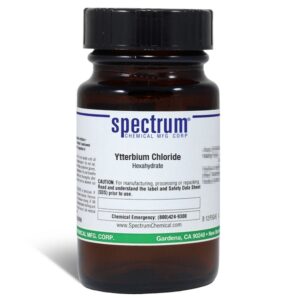
Ytterbium Chloride, Hexahydrate
$449.60 Add to cart View Product DetailsYtterbium Chloride, Hexahydrate
-
Zinc
$163.88 Add to cart View Product DetailsMolecular Formula : Zn






